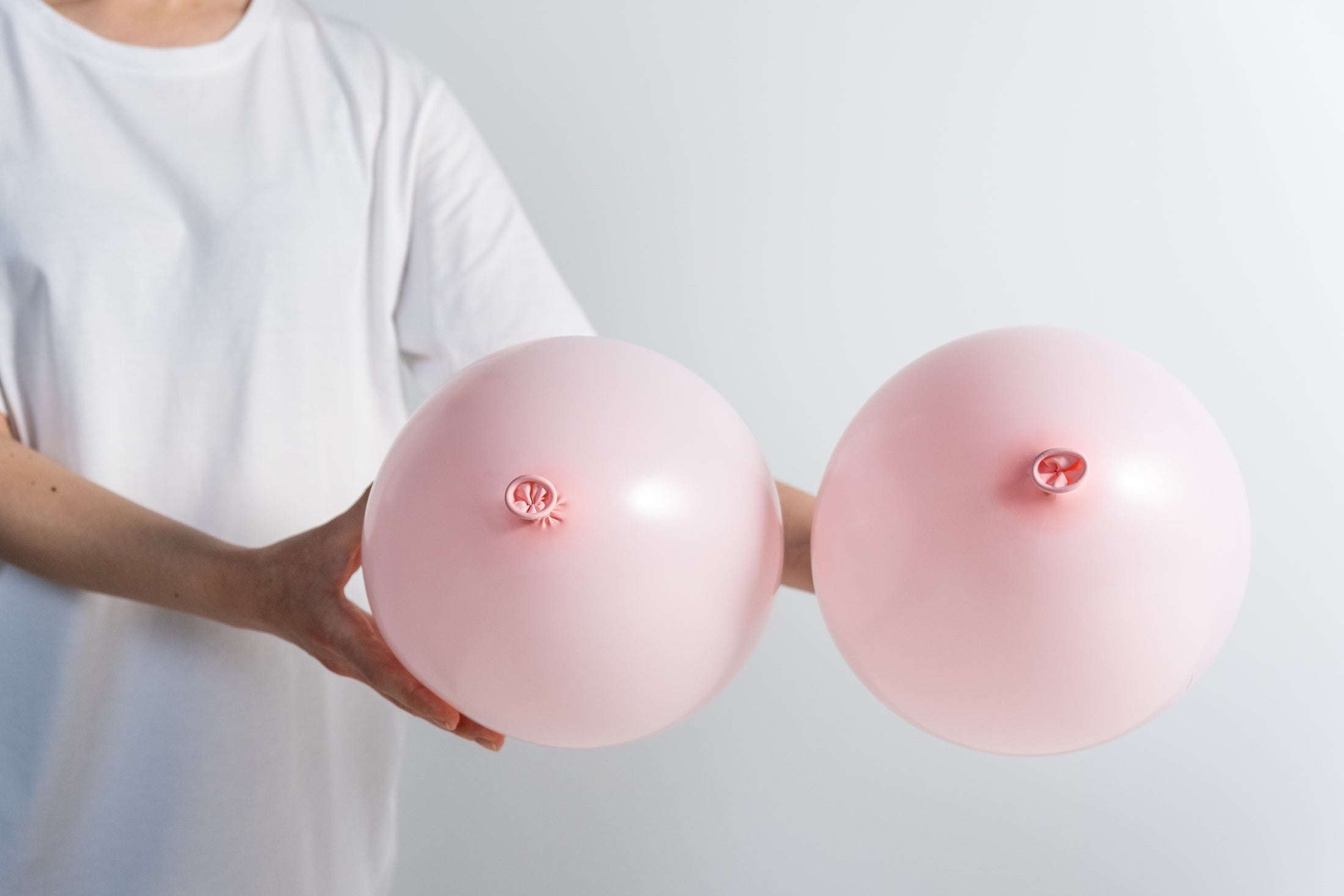
One breast. Two breasts. No breasts. New Breasts.
As October comes to a close, so does National Breast Cancer Awareness Month. As a survivor, I am personally grateful for the annual month-long spotlight; there is absolutely no doubt in my mind that I am healthy and thriving today as a result of the incredible progress that has been made since the advent of BCAM in 1985. But for those of us who have been directly touched by breast cancer, every month should be breast cancer awareness month. In fact, all women … even women under age 40 … should not only be aware, but be on guard.
Wish I knew then what I know now
Disclaimer, the following is not intended to provide medical advice. I’m sharing what I learned and deduced through my breast cancer journey with hopes of helping women everywhere take simple measures to keep “the girls” from turning on them.

- Develop a self-exam habit, even if it’s not a perfect habit – In the mid-1990’s, as a Neutrogena marketing exec, I sponsored a PSA campaign with the American Society of Plastic Surgeons. One of the ads was about encouraging breast self-examination for early detection and thus, more treatment options for breast cancer. For me, the process recommended for a well-conducted monthly self-exam was off-putting. And at any rate, it’s difficult create habit for something that’s done only monthly. So I developed the habit of examining my breasts as part of my daily bathing routine. That’s how I found the little lump that I hoped was a cyst, but turned out to be early stage cancer. Would mammography have found it eventually? Read on …
-
Don’t be dense about tissue density - In 2013, California implemented a requirement that the following statement be included with the results of a significant percentage of mammograms: “Your mammogram shows that your breast tissue is dense. Dense breast tissue is common and is not abnormal. However, dense breast tissue can make it harder to evaluate the results of your mammogram and may also be associated with an increased risk of breast cancer.”
As an eternal optimist, I focused on the “no detected abnormality” part of my mammogram report, and brushed over the dense tissue part that was followed with a suggestion to discuss options with my doctor. Given that my doctor expressed no concern, I went right along with her suggestion that I downshift to having mammograms every two years instead of annually. When I was referred to the women’s health clinic for the diagnosis of my little lump, the mammography technician marked the spot of the lump, but it was still undetectable on the mammogram. - Genetics play a role in some less-than-obvious ways – I knew of nobody in my family who had ever had breast cancer. However, I noted that on the medical intake forms for my treatment and surgeries, there was often a separate box under race / ethnicity for “Ashkenazi Jew.” So just as I was about to go under anesthesia for the first of several surgeries, I asked my breast surgeon why that was and she told me that Ashkenazi Jews have a higher incidence of breast cancer. Hmmm … why hadn’t my women’s health doctor ever told me that and, if indeed that was the case, why had I been down-shifted to bi-annual breast cancer screening? Read on ….
-
Ignorance is not bliss – I dodged a bullet. I had Invasive Lobular Carcinoma that I found through my clumsy self-exam and at least had the good sense to go deep to get an answer sooner rather than later. But where I believe I seriously missed the boat was not having a deeper relationship with my women’s healthcare provider. I would go for my annual exams which generally took no more than 10 minutes. I would see whatever MD or NP was conveniently available. My blood work always indicated I was exceptionally healthy, so I never did anything to be proactively informed about my risks of breast cancer.
My younger sister, on the other hand, was up on the latest technologies for breast cancer detection. She is a registered nurse who worked for a medical diagnostics company in the OB/GYN domain. So instead of following the default protocol for breast cancer detection, she demanded digital tomosynthesis as she knew the density of her breast tissue was an issue. Four months after I had my surgeries for ILC, sis’s tomosynthesis showed some irregularities close to the chest wall in her dense breast tissue. Biopsies followed and she was diagnosed and treated for DCIS, a stage of breast cancer that would have never been identified at such an early stage with current standard of care.

Tale of Two Sisters
Both my sister and I were extremely fortunate. I was diagnosed at age 61. She was diagnosed the same year at age 59. I was living in California. She was living in Ohio. We both sought the opinions of multiple doctors. I chose mastectomy given that I was healthy enough to withstand the surgery and knowing that reconstructive surgery was an option. My sister required two lumpectomies; the first enabled diagnosis, but did not result in clear margins of the tumor. Following her second lumpectomy, she was treated with radiation therapy.
What we both NOW share in common is the profound appreciation that breast cancer isn’t something that happens to other people. That even without a family history or BRCA genetic mutation, the risk is real. And for all women, being proactively involved in your health is one of the key lifestyle practices for wellbeing and longevity. My hope is that our story inspires you to keep the spirit of October Breast Cancer Awareness month with you all year long.


